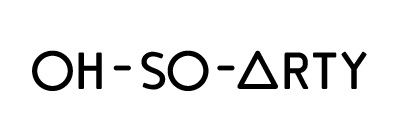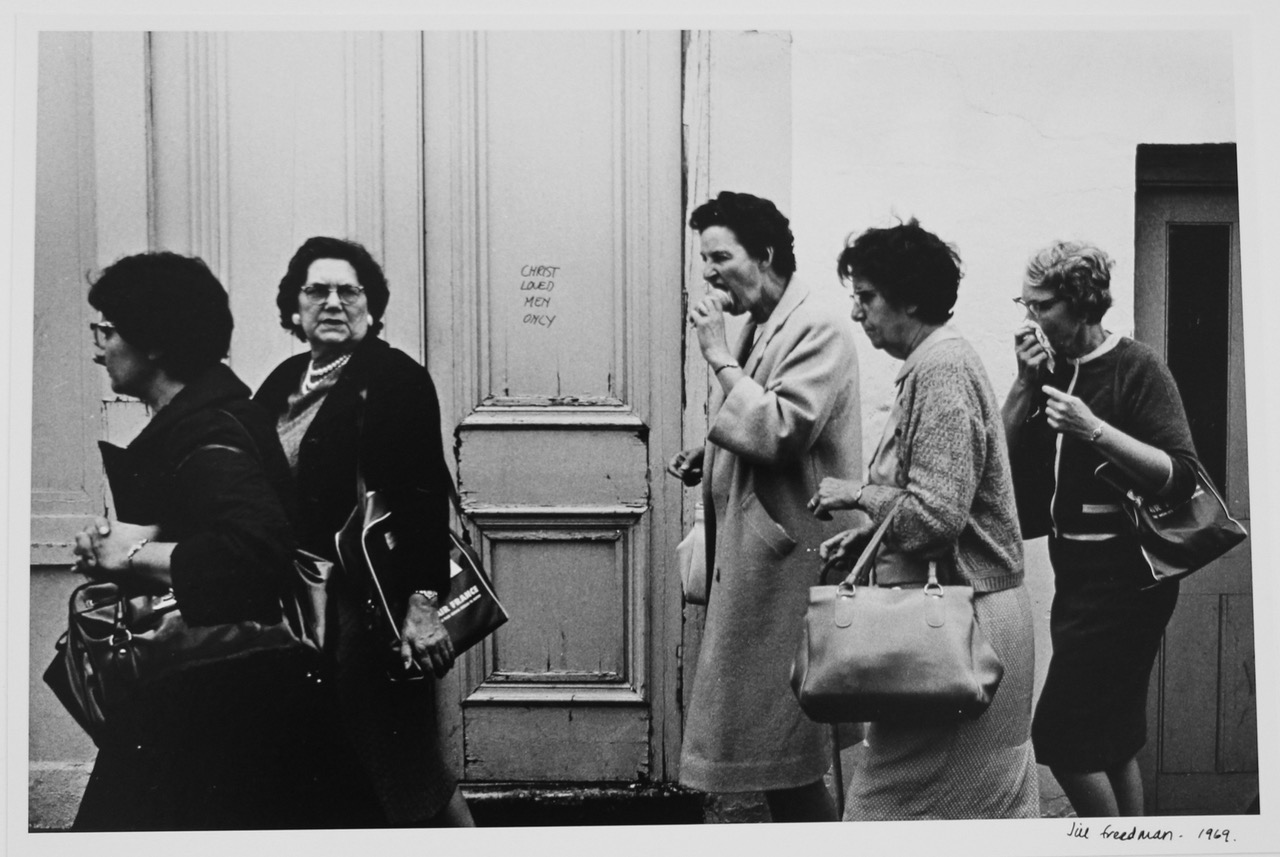The exhibitions selected this month are diverse – from Contemporary documentary photography and Conceptual art to 1960s street photography. All inspired in me a strong emotional response – a reminder of art’s ability to jolt us out of our everyday lives (and reflect on the human condition)!
I.
Exhibition: Prix Pictet: Space
Artists: Mandy Barker , Saskia Groneberg, Beate Gütschow, Rinko Kawauchi, Benny Lam, Richard Mosse, Sohei Nishino, Sergey Ponomarev, Thomas Ruff, Munem Wasif, Pavel Wolberg and Michael Wolf
Venue: LUMA Westbau
Dates: September 22nd to October 29th, 2017
The annual Prix Pictet photography award usually leans towards big name artists with a smattering of newcomers, and this year is no different. Touring different locations around the globe, it is always a behemoth event in the photography calendar! The theme this year (always relating to sustainability) is Space, presenting 12 shortlisted artists.
I struggled with the theme Space. The artworks take you in such different directions, from pollution to migration, overpopulation, even outer space with Thomas Ruff’s ma.r.s landscapes, that it lacked to me a wholeness or flow. I was initially perplexed by how Space even relates to sustainability and to each individual artist’s practice, but I started to discover connections the longer I spent with the works.
This year’s winner is Irish photographer Richard Mosse, for his series “Heat Maps”. Made using a military camera that detects body heat from a distance of over 30 km, Mosse tracked the journeys of refugees from the Middle East and north Africa. In his panoramic photograph “Idomeni”, 2016 (header image), a refugee camp in Greece, the atmosphere is haunting; people appear ghost-like as inverted silhouettes due to the camera only picking up contours of heat rather than light and shadow. Unlike the endless press images of the refugee crisis, which we seem increasingly numb to, I became completely lost in this work, taken in by the huge expanse of the scene and wondering about these individuals’ plight - where will their journey end, how can we find space for them?
In contrast, Michael Wolf’s photographs capture the Tokyo rush hour through close-up portraits of faces pressed against train windows in the morning subway in Shinjuku station. Each passenger seems to be caught in a dream-state. I held my breath, feeling the claustrophobia of this reality for millions of commuters every day. I relaxed a little in front of Rinko Kawauchi’s photograph of the Japanese tradition of yakihata (controlled burning of fields). Her image of a hill divided in two by a wall of flame, one side scorched black, the other untouched is beautifully painterly. The message is meant to be of regeneration, however the blackened hill soon brought to mind global issues of over-farming and deforestation, and only awoke in me a warning.
We’ve become so desensitized to environmental and humanitarian crisis that there’s certainly a timeliness to this theme. I left affected by unapologetic images of cramped cities, hemmed in commuters, restricted living quarters – perhaps the title should have been more pertinently “Out of Space”!
Michael Wolf, Tokyo Compression 18, 2010, from the series Tokyo Compression, 2008–11
© Michael Wolf, Flowers Gallery, London and Prix Pictet 2017
II.
Exhibition: A Line Between the Morning Sun and the Evening Sun
Artists: Bill Bollinger, Hamish Fulton, Raphael Hefti, Mary Heilmann, Irene Kopelman, Gary Kuehn, Renato Leotta, Haroon Mirza, Roman Signer, James Turrell.
Venue: Häusler Contemporary
Dates: August 25th to October 28th, 2017
“A Line Between the Morning Sun and the Evening Sun”. What a title! I kept turning it over in my head whilst ruminating over the various works in the show. Later I learnt the curator, Giovanni Carmine (Director of Kunst Halle Sankt Gallen) took it from Hamish Fulton’s artwork “From Coast to Coast (France)” (1992), featured in the show. Fulton is known as the “walking artist” - his experiences from extended hikes transfer to factual, text based graphic works; this one relates to the daily course of the sun’s orbit. The exhibition celebrates Häusler Contemporary’s 10-year anniversary, and for me the title beautifully encompasses a sense of time passing. Many of the artists place emphasis on process, seeing how far they can push materials (through experiments, extreme temperatures and science). They embrace that tension between control and letting go – a key component to any journey!
In both the first and second space, Raphael Hefti’s “Various Threaded Poles” (2014), soar up to the ceiling, interrupting the space with shifting bands of colour. A quick glance down revealed Gary Kuehn’s “Melt Piece” (1969), fluid aluminium spilling over a rectangular brick nestled in the corner of the room. A playful surprise! Roman Signer’s “Stuhl und Wind i.O.” (2017) comprises an old vintage ventilator fan, noisily blowing out air, beneath a simple wooden chair. As Signer is famous for his exploding artworks, I wondered if any second the chair would lift-off!
The idea of a line in the title is wonderfully descriptive. Irene Kopelmann’s “Lianas” (2014), a row of faint, delicate pencil drawings reveal knotted vines that lead us round the first corner into the second space. Then a short pause, followed by a minimal grey, horizontal line. At first, I wondered if this was a part of the gallery wall – it is in fact Bill Bollinger’s “Channel Piece for Corner” (1968), which points to small colour drawings by the artist, roughly sketched.
I loved the way the exhibition incorporated such diverse works – sculpture, painting, drawing, photography by artists young and old. But amongst this multiplicity, I instantly felt a cohesion and relatedness, like the sense of calm you only feel when watching the sun rise or set!
Installation view, “A Line Between the Morning Sun and the Evening Sun”, Galerie Häusler Contemporary, Zürich
Photo by Mischa Scherrer, Courtesy Häusler Contemporary München | Zürich
III.
Exhibition: No title
Artist: Jill Freedman
Venue: Fabian & Claude Walter
Dates: September 28th to October 21st, 2017
“The first time I touched a camera, I went right out into the street with it” recalled street photographer Jill Freedman (b. 1939, New York). And that’s exactly what you feel when looking at her black & white photographs - the camera was part of her and she was fervidly drawn to her subjects. The small exhibition in Fabian & Claude Walter’s intimate cabinet space present a selection of vintage prints from the 1960s and early 1970s, with a host of characters – anonymous pedestrians, protestors, the downcast on the streets of New York, circus clowns and artists.
Freedman’s images are gritty with a prickly edge and biting humour. One photograph, “Untitled, NYC” 1970, captures what appears to be two young people having sex surrounded by a crowd, but only the man’s backside and the woman’s hand and legs are visible - the rest is concealed underneath a large sheet of ripped and crumpled canvas or paper. I wasn't sure if I should be appalled or burst out laughing! She also brilliantly captured momentary juxtapositions in the street - in “Christ Loved Men Only, London”, 1967, a dour group of British ladies, one blowing her nose and another taking an ungainly lick of an ice-cream cone is flanked by the wry graffiti scrawl of “CHRIST LOVED MEN ONLY”.
Sure, the overall message is bleak but amongst all the toughness, I felt her tenderness and wicked humour too. The exhibition offers more questions than answers, as you ponder, you’ll find it hard to look away. Freedman’s images carry both poetry and punch – she’s one girlboss I’d like to meet!
Jill Freedman, Christ Loved Men Only, 1969
© Jill Freedman, Courtesy of Fabian & Claude Walter Galerie, Zürich
Banner image:
Richard Mosse, Idomeni, 2016, from the series Heat Maps, 2016-17
© Richard Mosse, Jack Shainman Gallery, New York and Prix Pictet 2017




